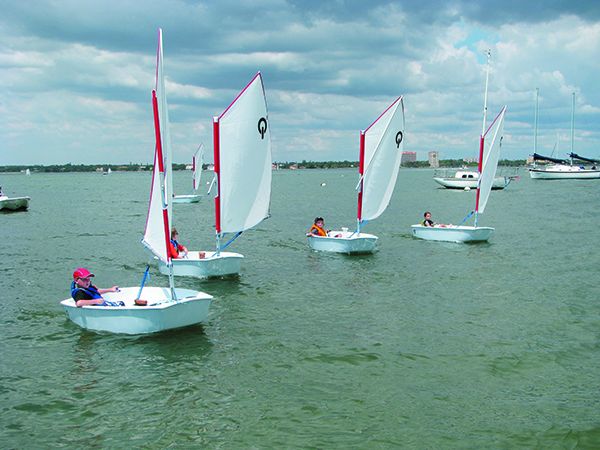In the wake of a terrible tragedy that struck a few days before Thanksgiving in Sarasota, Florida, home of the Sarasota Youth Sailing Program (as well as Practical Sailor’s editorial office), we’re asking all organized sailing programs to review their chase boat safety equipment and rescue protocols. Cruising sailors with planing dinghies should also take heed.
Specifically, owners of small planing boats should make sure the boat is outfitted with a fail-safe engine cut-off system. This can be a worn lanyard attached to a release clip that activates the motor’s kill switch (our preference), or possibly one of the devices reviewed in the November 2020 issue of Practical Sailor.
If you do opt for one of the new wireless systems, these systems should be appropriate for this use, and tested frequently. Some of the new devices are aimed primarily at giving solo operators a chance at recovering their vessel after being ejected and won’t be much help when near instantaneous cut-off is required.
The accident occurred during sailing practice for the SYSP Optimist fleet. The investigation is still ongoing, and not all the details have been released. The following statement from the Florida Fish and Wildlife Conservation Commission investigators describes what happened based on their initial findings:
“Based on preliminary information gathered from the scene and witnesses, it appears that the operator of a 20-foot vessel involved in the youth sailing practice was assisting the operator of an 8-foot sailboat who was experiencing issues with his vessel. While assisting the sailboat operator, the operator of the 20-foot vessel lost his footing and fell, resulting in the vessel being activated into gear and the operator being thrown from the vessel. The vessel continued, unmanned, and struck several 8-foot sailboats. Sadly, a third juvenile identified as Ethan Isaacs, age 10, passed away as a result of injuries sustained in this incident.”
Ethan attended the same school as my son. The sixth grader had recently won the county’s STEM competition, qualifying for districts. The grief that wracked the school and the local sailing community just days before Thanksgiving was gut wrenching.
Sadly, this is not the first time a driverless small boat has had fatal consequences. The potential harm of a driverless boat is why engine makers have long had lanyard-type kill switches on all small outboard powered boats. For the average sailor, the current lanyard release clips—which are practically foolproof when used properly—are perfectly suitable for dinghy engines. Outboard powered sailboats, on the other hand, would benefit from a wireless cutoff switch that lets the operator set the main, trim sheets, or take bearings while under autopilot.
We don’t yet know if the boat involved in the Sarasota accident was protected by a lanyard clip or one of the electronic devices that we recently tested. Some of the cutoff devices we looked at won’t stop the outboard until it is at least 50 feet away from the operator, and probably would not have been much help. What is clear is that all operators of small outboard boats need to be fully aware of the risks of accidentally engaging the throttle, and do their best to prevent it.
In most cases, just shutting off the engine when near persons in the water is the safest recourse. Fortunately, shutting down the engine is something that should come naturally to a sailor.











































It is probably worth commenting on kill switches for solo sailors and power boaters especially in cold waters. I might add the equivalent for sailboat autopilot devices that would bring her into irons. That’s a simple algorithm right? 🙂